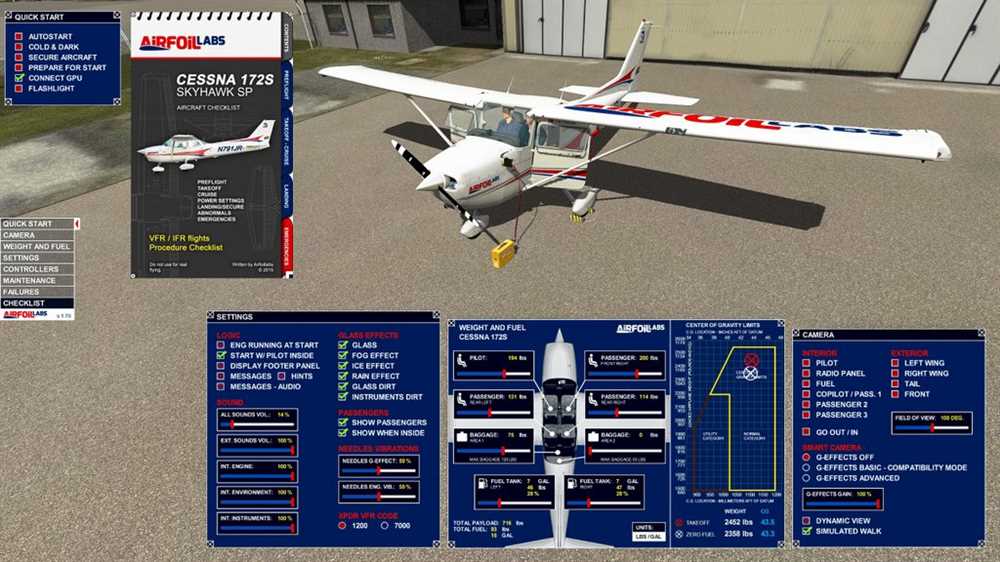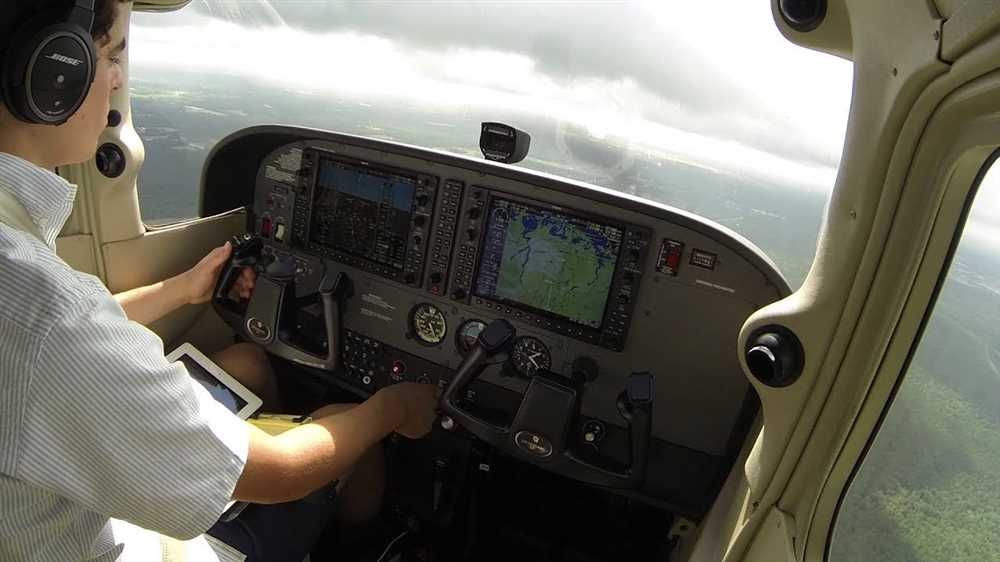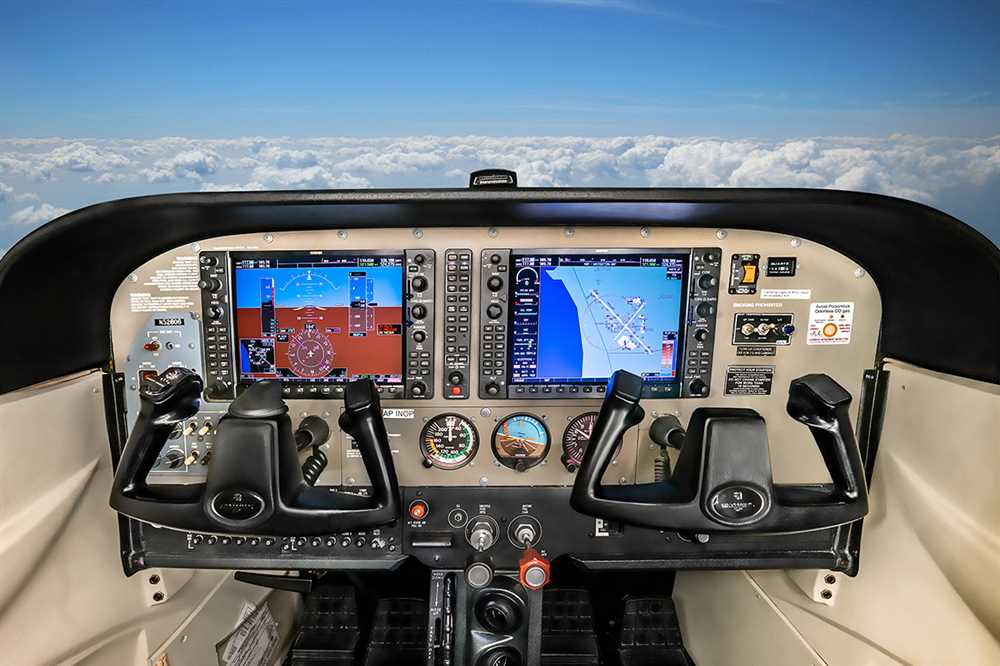
Before embarking on your first solo flight in a Cessna 172 aircraft, it is crucial to undergo a pre solo test. This test is designed to evaluate your knowledge and skills in various areas of flying, ensuring your readiness for this significant milestone in your pilot training. The pre solo test for the Cessna 172 consists of a series of questions and practical evaluations that cover important aspects of flight operations.
One of the key areas that the pre solo test focuses on is aircraft knowledge. You will be tested on your understanding of the Cessna 172’s systems, controls, and limitations. This includes knowing how to perform pre-flight inspections, understanding fuel management, and being familiar with emergency procedures. A sound knowledge of these aspects is essential for your safety and the successful completion of your solo flight.
In addition to aircraft knowledge, the pre solo test will also assess your understanding of aviation regulations and airspace rules. You will be quizzed on topics such as air traffic control procedures, navigation charts, weather patterns, and communication protocols. Comprehending these aspects is crucial for maintaining situational awareness and ensuring safe operations during your solo flight.
Overview of Pre Solo Test for Cessna 172
Before a student pilot can conduct their first solo flight in a Cessna 172 aircraft, they must successfully pass a pre solo test. This test is designed to evaluate the pilot’s knowledge and understanding of various important aspects of flying the Cessna 172, as well as their ability to handle different flight scenarios and emergencies.
The pre solo test for Cessna 172 typically covers a wide range of topics including aircraft systems, aircraft performance, navigation, weather conditions, emergency procedures, and regulations. It is crucial for the student pilot to have a solid understanding of these topics in order to ensure a safe flight and meet the standards set by the aviation authorities.
During the pre solo test, the student pilot may be asked questions about the aircraft’s engine, fuel system, electrical system, flight instruments, and other systems. They may also be required to demonstrate their knowledge of the aircraft’s weight and balance, takeoff and landing procedures, stall recovery techniques, and navigation skills.
Additionally, the pre solo test may include questions relating to meteorology such as interpreting weather reports and forecasts, recognizing weather hazards, and determining the suitability of weather conditions for flight. The student pilot should also be familiar with different airspaces and their associated rules and regulations.
Overall, the pre solo test for Cessna 172 is an important evaluation that ensures the student pilot is adequately prepared and knowledgeable to handle the responsibilities and challenges of solo flight. It is an opportunity for them to demonstrate their understanding of aircraft systems, procedures, and regulations, and to prove their ability to make informed decisions and handle different flight situations effectively and safely.
Flight Control Examination

The flight control examination is a crucial part of the pre-solo test for flying a Cessna 172. This examination evaluates the pilot’s knowledge and ability to properly manipulate and control the aircraft’s flight controls during different flight scenarios. It is essential for pilots to demonstrate proficiency in operating the control surfaces to ensure safe and effective flying.
During the flight control examination, the pilot is expected to perform various maneuvers, including takeoff, climbing, descending, turning, and landing. The examiner will closely observe the pilot’s use of the aircraft’s flight controls, such as the control yoke, rudder pedals, and trim tabs, to assess their ability to maintain proper control and stability throughout the flight.
One of the key areas evaluated is the pilot’s understanding and execution of coordinated flight. This involves using the appropriate combination of aileron, elevator, and rudder inputs to maintain a stable and coordinated flight path. The pilot should demonstrate the ability to keep the aircraft properly aligned and balanced, especially during turns and changes in altitude.
The flight control examination also assesses the pilot’s knowledge of emergency procedures and their ability to react appropriately in case of unexpected situations. This includes simulating emergencies such as engine failures, in which the pilot must demonstrate the ability to maintain control of the aircraft and safely execute emergency procedures, such as selecting an appropriate forced landing site.
In conclusion, the flight control examination is a critical assessment that ensures a pilot’s competency in manipulating and controlling the flight controls of a Cessna 172. Pilots must demonstrate their understanding of coordinated flight, ability to maintain control and stability, and proficiency in emergency procedures. Successful completion of the examination indicates that a pilot is ready to fly solo in the Cessna 172.
Aircraft documentation review
Before conducting a pre-solo test in a Cessna 172, it is essential to thoroughly review the aircraft documentation. This documentation includes various manuals, checklists, and charts that provide important information about the aircraft’s systems, operating procedures, and limitations. Familiarizing oneself with this documentation is crucial for ensuring the safe and efficient operation of the aircraft.
One of the key documents to review is the Pilot’s Operating Handbook (POH). The POH provides detailed information on the aircraft’s performance, weight and balance, emergency procedures, and operational limitations. It also includes the aircraft’s systems description and operating procedures, allowing the pilot to understand how to properly utilize and manage the aircraft’s various components.
Another important document to review is the airspace charts and airport diagrams. These charts provide vital information regarding air traffic control procedures, airspace restrictions, and navigation aids. They outline the different airspace classifications and altitudes, helping the pilot to plan a safe and efficient route for the flight. The airport diagrams provide valuable information on the layout and configuration of the specific airport being used, including runway lengths, taxiway locations, and available services.
- Checklists are also essential documents that need to be thoroughly reviewed. These checklists outline the step-by-step procedures for different phases of flight, ensuring nothing is overlooked or missed. By following the checklist procedures, pilots can effectively manage tasks, confirm critical settings, and perform necessary checks before, during, and after each flight. This helps maintain the highest level of safety and reduces the risk of human error.
- Emergency procedures documentation should also be carefully reviewed. This information provides guidance on how to handle various emergency situations, such as engine failures, fires, or electrical malfunctions. Knowing the correct procedures to follow in these situations is paramount to ensuring the safety of both the pilot and the aircraft.
In summary, thoroughly reviewing the aircraft documentation, including the Pilot’s Operating Handbook, airspace charts, checklists, and emergency procedures, is crucial before conducting a pre-solo test in a Cessna 172. This ensures that the pilot is well-informed and prepared to operate the aircraft safely and efficiently. By understanding the aircraft’s systems, limitations, and procedures, pilots can confidently navigate the skies and handle any unexpected situations that may arise.
Weight and Balance Calculation

Weight and balance calculation is an essential part of flight planning, especially when it comes to operating a Cessna 172 aircraft. The weight and balance of the aircraft must be within specified limits to ensure safe and efficient flight.
First, the weight of the aircraft and its contents, including fuel, passengers, and cargo, must be determined. This information is typically obtained from the aircraft’s documentation and verified using a scale or other measuring devices.
Next, the weight and balance data is used to calculate the center of gravity (CG) of the aircraft. The CG is a point within the aircraft where the total weight is considered to act. It is crucial for the aircraft to be loaded in such a way that the CG remains within specified limits.
The weight and balance calculation helps pilots determine the maximum allowable weight for takeoff and landing, as well as the allowable weight distribution. This information is critical for maintaining control and stability during flight.
It is important for pilots to carefully calculate the weight and balance of the aircraft before every flight, considering factors such as fuel burn, passenger weights, and cargo distribution. Failure to properly calculate and maintain weight and balance limits can lead to unsafe flying conditions and potential accidents.
Engine and Systems Check
Before taking off in a Cessna 172 for a pre-solo flight, it is crucial to perform an engine and systems check to ensure that everything is in proper working order. This check is essential for the safety of the pilot and passengers, as any issues with the engine or systems could lead to a dangerous situation in the air.
The engine check involves a thorough examination of the aircraft’s engine components, including the oil level, fuel quantity, and proper functioning of the ignition system. The oil level must be checked to ensure that it falls within the acceptable range for safe operation. The quantity of fuel should also be verified to ensure that there is enough for the intended flight duration. Additionally, the ignition system should be tested to ensure that all spark plugs are firing properly and there are no issues with the engine’s ignition.
- Fuel System: The fuel system should be checked for any leaks or blockages. The fuel selector valve should be set to the appropriate tank for takeoff, and the primer should be used according to the specific procedures outlined in the aircraft’s manual.
- Electrical System: The electrical system, including the battery, alternator, and electrical instruments, should be inspected to ensure proper functioning. Any anomalies, such as a low battery charge or malfunctioning instruments, should be addressed before takeoff.
- Instruments: The various flight instruments, such as the altimeter, airspeed indicator, and compass, should be checked for accuracy. Any discrepancies should be noted and corrected before proceeding with the flight.
Once the engine and systems check is complete and everything is in order, the pilot can proceed with confidence knowing that the aircraft is in proper working condition. This thorough pre-flight check is an essential part of aviation safety and should never be overlooked or rushed, especially when flying solo.
Emergency Procedures Knowledge
In order to safely operate a Cessna 172 aircraft during a pre-solo test, it is crucial for pilots to have a thorough understanding of emergency procedures. These procedures are designed to ensure the safety of both the pilot and the aircraft in the event of an unexpected or hazardous situation.
Emergency Landing
One of the most important emergency procedures to know is how to perform an emergency landing. Pilots should be familiar with the checklist of actions to be taken in the event of an engine failure or other critical malfunctions. This includes quickly assessing the situation, selecting a suitable landing spot, and executing the proper landing technique to minimize the risk of injury or damage to the aircraft.
Fire and Smoke
In the event of a fire or smoke in the cockpit, pilots must know how to quickly respond. This includes immediately shutting off the fuel and electrical systems, notifying air traffic control of the situation, and safely executing an emergency landing if necessary. It is crucial to remain calm and follow the appropriate checklist to prevent the situation from escalating and endangering the pilot and passengers.
Electrical System Failure
In the event of an electrical system failure, pilots should be prepared to handle the situation by relying on backup systems and instruments. This may include manually operating essential systems such as radios, navigation equipment, and lighting. Pilots should have a thorough understanding of the aircraft’s electrical system and be familiar with troubleshooting techniques to identify and resolve the issue if possible.
Loss of Communication
In the event of a loss of communication with air traffic control, pilots should follow established procedures to ensure safety. This includes using alternative means of communication such as transponder codes, visual signals, and flying designated routes or procedures. Pilots should also maintain situational awareness and be prepared to respond to any instructions given by air traffic control once communication is reestablished.
Conclusion
Having a comprehensive knowledge of emergency procedures is essential for any pilot, especially during a pre-solo test. By being familiar with the proper actions to take in emergency situations, pilots can ensure their safety and the safety of others, as well as protect the aircraft from further damage. It is important to regularly review and practice these procedures to maintain proficiency and readiness in case of an emergency.
Weather conditions evaluation
One of the crucial aspects of a pre-solo test for a Cessna 172 aircraft involves evaluating weather conditions. As a pilot, it is essential to understand how weather can affect flight safety and make informed decisions based on the observed conditions.
Weather reports and forecasts: Before any flight, it is important to check weather reports and forecasts provided by meteorological services. These reports provide vital information such as wind speed and direction, visibility, cloud cover, temperature, and any potential weather hazards. Pilots should carefully analyze these reports to assess whether the current weather conditions are suitable for the intended flight.
Assessing visibility: Visibility is a critical factor when evaluating weather conditions. Pilots need to ensure that the visibility is sufficient for safe navigation, especially during takeoff, landing, and en route. Impaired visibility due to factors such as fog, haze, or heavy precipitation can significantly impact pilot’s ability to maintain situational awareness and can increase the risk of accidents.
Wind speed and direction: Wind is another crucial element to consider when evaluating weather conditions. Pilots should assess not only the speed of the wind but also its direction in relation to the planned flight path. Strong crosswinds can make takeoff and landing challenging, especially for inexperienced pilots. Additionally, gusty winds and wind shear can affect the aircraft’s stability and control, making it necessary to evaluate these factors closely before deciding to fly.
Cloud cover and ceiling: Clouds can affect visibility, ceiling, and can indicate potential weather hazards. Pilots should evaluate the height of the cloud base, often referred to as the ceiling, to ensure it is above the minimums required for safe flight. Different types of clouds, such as cumulus or nimbus, can also provide insights into possible weather conditions, such as convective activity or the presence of precipitation. Evaluating cloud cover helps pilots make decisions regarding the feasibility and safety of the intended flight.
Weather hazards: Apart from analyzing general weather conditions, pilots should also evaluate specific weather hazards that can affect flight safety. These hazards may include thunderstorms, icing conditions, turbulence, or reduced visibility due to smoke or dust particles. Pilots must be aware of the potential risks associated with such hazards and should avoid flying when the weather poses a significant threat to the safety of the flight.
- Evaluating weather conditions is an integral part of a pre-solo test for a Cessna 172.
- Weather reports and forecasts provide essential information for flight planning.
- Visibility, wind speed and direction, cloud cover, and weather hazards should all be evaluated.
- Pilots must make informed decisions based on the observed weather conditions.